Like Shakespeare’s King Lear, Romeo and Juliet, Hamlet also one of William Shakespeare’s famous tragedies, is set in the royal palace of Elsinore in Denmark. The play unfolds against a backdrop of political problems and familial relation.
Hamlet by Shakespeare is a timeless classic tragedy that deals with the human emotions, dilemmas, and the complexities of life. This article provides an act-by-act summary of this captivating play, offering a glimpse into the intricate web of plots and emotion.
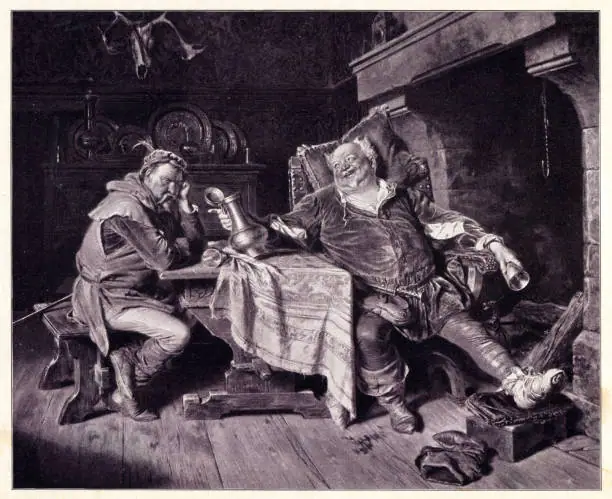
Shakespeare masterfully explains this setting to highlight the tension and evoke a sense of pity and fair, and shows psychological depth of his characters.
Summary of Hamlet By Shakespeare
Act 1
The announcement of King Hamlet’s ghost sets as the central conflict of the play, and create a sense of pity and fair. Prince Hamlet’s internal thoughts and conflicted emotions add depth to his quest for truth and justice.
As secrets of betrayal come to light, we’re dip into a world full of sneaky political plans and family problems. This sets the mood for the sad story that’s about to happen.
Act 2
The Hamlet pretends to be mad as a dangerous plan to navigate the false court. When the actors arrive, he note a chance to reveal Claudius’s guilt.
This shows how active and smart Hamlet is in finding out the truth. It also makes things more complex as friendships change and problems get worse in Elsinore Castle.
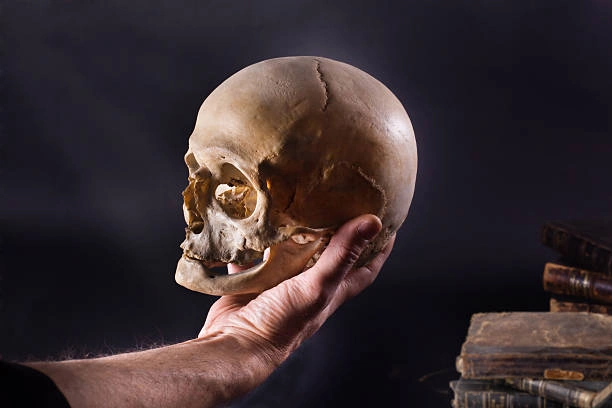
Act 3
In a big moment in the story, Hamlet starts thinking in depth about life and death in his famous speech, “To be or not to be.” The pressure of getting revenge of his father’s death create a tension in Hamlet’s mind.
It also caused him a lot of inner struggle. When they drag the play in a story, it’s a really important part because it shows that Claudius is guilty. It makes everything more intense and makes the characters’ lives sad.
Act 4
Things get really dangerous, when Hamlet does something without thinking and accidentally kills Polonius. This makes Ophelia, Polonius’ daughter, go absurd because her dad died and Hamlet’s been acting senselessed.
It makes the sad story even more sadder. This makes everything more serious, leading up to a big showdown between Hamlet and the person who want revenge on him.
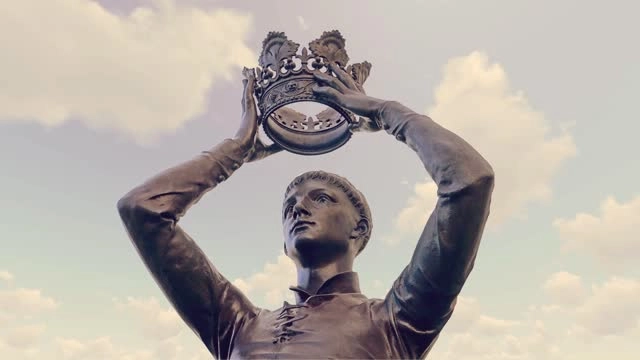
Act 5
The big war between Hamlet and Laertes happens because they both wish revenge and have been into it. But things go really wrong. Claudius and Laertes’ plans to get rid of Hamlet even don’t work.
It ends in a huge disaster where main characters die. When Fortinbras stands up, it reminds us how wishing too much power can lead to bad outcomes.
Analysis of Hamlet By Shakespeare
Act 1
The opening act of “Hamlet” sets the stage with an atmosphere of pity and fear. The appearance of King Hamlet’s ghost introduces a supernatural element. It highlight the narrative’s central conflict.
Prince Hamlet’s quest for justice and truth begins against the backdrop of political disruption and familial problem. The ghost’s revelation of murder and betrayal within the royal court showcase Elsinore Castle into a realm of suspicion.
Through the ghost’s haunting words, Shakespeare skillfully establishes the suspicious atmosphere of uncertainty that serves as a thematic undercurrent throughout the play.
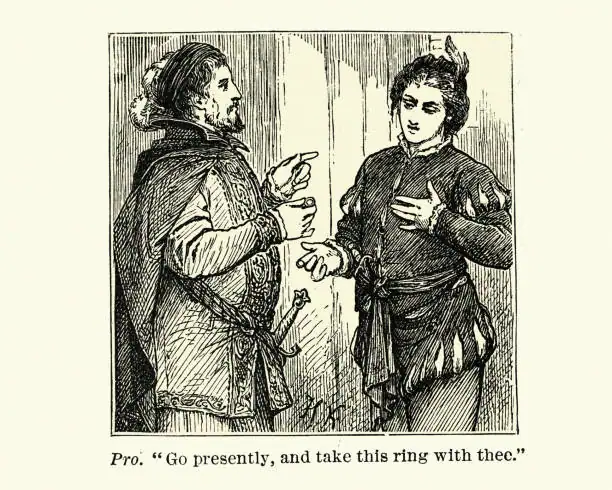
Act 2
Hamlet pretends to be made on purpose to arouse everyone at the tricky court. This act helps him watch and move around carefully, all the situation proof against Claudius. When the actors come to the stage, Hamlet note a chance to show Claudius’s guilt.
This part of the story is like a small version of the bigger ideas in the play—like lying, showcasing, and the difference between what seems real and what’s actually real. Shakespeare is really good at showing these sneaky layers in the story.
Act 3
The third deals with the depths of Hamlet’s psyche, highlighting his internal struggle through the famous soliloquy, “To be or not to be.” This intense moment shows Hamlet’s existential crisis, wherein he grapples with the weight of avenging his father’s murder against the philosophical block of life and death.
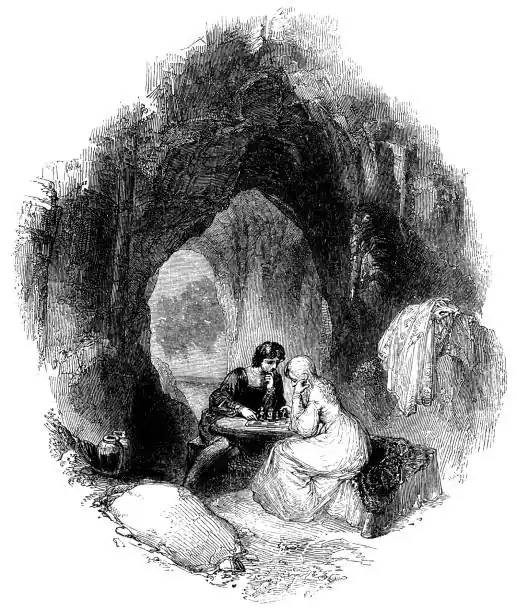
Hamlet’s strained relationships, particularly with Ophelia, mirror his inner thoughts and underscore the tragedy of his predicament. The play within the play, chestrated by Hamlet, serves as a dramatic play. It reveals Claudius’s guilt while showing the stakes and narrative’s complexity.
Act 4
Things get really tense in the story because Hamlet does something without thinking and also accidentally kills Polonius. This makes everything even more intense. After the death of his father, Hamlet starts acting strange, Ophelia goes crazy, which adds a lot of sadness to the story.
Hamlet keeps getting more and more unstable and careless, showing that something wrong is about to happen. It’s all about how emotions can mess things up and make people fall apart inside.
Act 5
The ending of “Hamlet” is full of sadness. The long-standing problems finally highlights when Hamlet and Laertes have a crucial fight, showing how revenge and destiny clash.
Claudius’s evil strategies to get rid of Hamlet don’t work and it leads to a really horrible series of events where many important characters die. When Fortinbras shows up at the end, it reminds us how the fight for strength in the royal court causes a lot of harm and ruins everything.
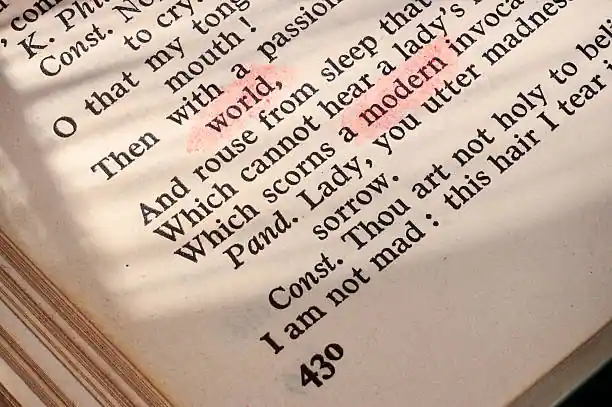
Main Literary Terms Used In Hamlet
| Term | Definition |
|---|---|
| Soliloquy | A dramatic monologue in which a character speaks to themselves, revealing their inner thoughts and feelings, often used to convey the character’s motivations. |
| Tragedy | A genre of drama in which the protagonist experiences a downfall, usually as a result of their own tragic flaw or a combination of circumstances. |
| Foil | A character who contrasts with another character (usually the protagonist) in order to highlight particular qualities of the other character. |
| Aside | A short speech or comment that is delivered by a character directly to the audience, typically not heard by the other characters on stage. |
| Irony | A literary device in which words or actions convey a reality different from and usually opposite to appearance or expectation. |
| Allusion | A brief and indirect reference to a person, place, thing, or idea of historical, cultural, literary, or political significance. |
| Metaphor | A figure of speech that compares two unlike things without using “like” or “as,” often to provide vivid imagery or express a complex idea. |
| Simile | A figure of speech that compares two unlike things using “like” or “as,” often to make a description more vivid or to explain something unfamiliar. |
| Pun | A play on words that suggests two or more meanings, by exploiting multiple meanings of words, or of similar-sounding words. |
| Dramatic Irony | A situation in a play or narrative in which the audience knows something about present or future circumstances that the character does not know. |
| Imagery | The use of figurative language to represent objects, actions, and ideas in such a way that it appeals to our physical senses. |
| Symbolism | The use of symbols to represent ideas or qualities, often giving deeper meaning to objects, people, or events. |
| Metonymy | A figure of speech in which one word or phrase is substituted for another with which it is closely associated. |
| Hyperbole | Exaggerated statements or claims not meant to be taken literally, used for emphasis or effect. |
| Alliteration | The occurrence of the same letter or sound at the beginning of adjacent or closely connected words. |
| Anagnorisis | A moment in a play or other work when a character makes a critical discovery, leading to a realization about their true identity or the true nature of a situation. |
| Catharsis | The process of releasing, and thereby providing relief from, strong or repressed emotions, often described as the purpose of tragedy. |
| Paradox | A statement that appears to be self-contradictory or silly but may include a latent truth. |
| Oxymoron | A figure of speech in which apparently contradictory terms appear in conjunction. |
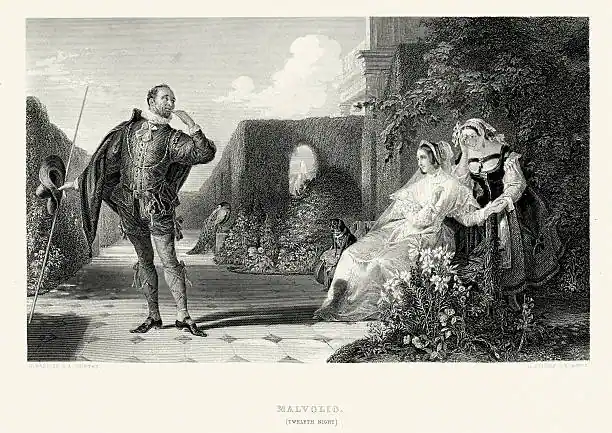
Characters In Hamlet
Hamlet
Hamlet is a character full of inner battles and thinking deeply. He’s always questioning what’s right and wrong and always thinking about the meaning of life. He’s really smart and funny, but at the same time, he can’t make up his mind about things.
When he pretends to be mad, it shows that he’s trying to figure out how to do the right thing while dealing with lots of big thoughts. Hamlet isn’t just about wanting revenge. He’s also struggling a lot inside, which makes him a character that people keep thinking about.
Claudius
King Claudius represents the antithesis of moral honor and ethical principles. He si ambitious and manipulative, he wished for power and embodies Machiavellian cunning.
Yet, Claudius is not a one-dimensional villain; he grapples with guilt, reflecting the inner conflicts that plague those who have sacrificed morality for power.
His story shows us how wishing too much and being too focused on success can change a person for the worse, making them do bad things and lose their goodness.

Gertrude
Queen Gertrude’s actions are kind of disturbing and make people think a lot. She gets married to Claudius in a sharp way after her first husband dies, which makes some people wonder if she’s being true to her old husband’s memory.
It seems like she’s torn between Hamlet and her new husband, Claudius. Her character helps Shakespeare talk about things. Like when people are disloyal and how family relationships can get really complicated, especially in a place full of politics like the royal court.
Ophelia
Ophelia is also a main character and Polonius’s daughter. She is like a really innocent person in a place full of lies. She goes through a really sad change and goes mad because her father dies and things go wrong between her and Hamlet.
Her going mad shows how someone who’s innocent can get hurt in a world where people are always trying to win in politics or get revenge. It’s like she’s the one who gets hurt because of what others are doing around her.
Laertes
Laertes, Ophelia’s brother, really wishes to get even with people quickly when he’s angry. He’s a bit like Hamlet in wanting revenge, but he acts without thinking much. Laertes shows us what happens when strong wishes take over and you act too fast.
His strong desire for payback teaches us that acting impulsively can cause a lot of harm. He’s a reminder to be careful about acting on strong emotions because it can lead to bad results, especially in the middle of all the chaos in the play.
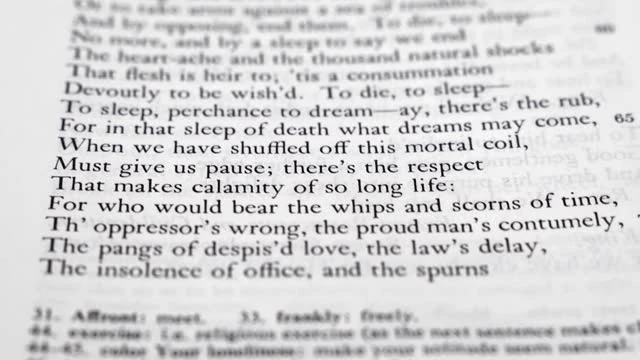
Themes of Hamlet By Shakespeare
Revenge and Justice
The play revolves around Hamlet’s confusion over seeking revenge for his father’s murder. He grapples with whether it’s right to take matters into his own hands or let justice prevail through lawful means.
This idea looks at whether seeking revenge actually solves problems or just keeps them going on. Hamlet’s own battle shows how hard it is to choose between doing what’s right and wanting to get back at someone who hurt you.
Mortality and Existential Questions
In the play, Hamlet thinks a lot about how short life is. And how we don’t know what happens after our death. His famous speech, “To be or not to be,” talks about what might happen if we’re alive or if we’re not.
This idea makes us think about how short life is and makes us wonder why we’re here and what makes our lives decent. It’s a big question that people have been thinking about for a long time.
Deception and Reality
In the play, many characters pretend to be someone they’re not or hide what they’re really thinking to get what they want. Hamlet pretends to be mad, Claudius hides that he’s guilty, and others also keep their real plans secret.
This idea isn’t just about their tricky plans. it’s about how hard it is to tell what’s real when everyone is hiding or keeping secrets. It makes us wonder what’s true in a world full of lies.
Madness and Sanity
The play explores the fine line between madness and sanity. Especially through Hamlet’s confused behavior and Ophelia’s tragic descent into madness following the problems in her life.
These instances of mental instability serve as a lens. Through which Shakespeare questions the weakness of the human mind and the psychological toll of grief, betrayal, and overwhelming circumstances.
Corruption and Decay
The play shows how things are getting wrong in the Danish court because people are doing wrong things. Claudius becoming king by killing the previous king is an example of how wishing for too much power can make someone really bad.
It’s not just about Claudius; the play also talks about how the whole society is becoming less honest. It teaches us that when leaders act in bad ways, it hurts everyone around them and makes things go wrong for everyone.
Famous Quotes in Hamlet
“Doubt thou the stars are fire;
Doubt that the sun doth move;
Doubt truth to be a liar;
But never doubt I love.”
“This above all: to thine own self be true,
And it must follow, as the night the day,
Thou canst not then be false to any man.”
“There are more things in Heaven and Earth, Horatio, than are dreamt of in your philosophy.”
Conclusion
Hamlet, a tragedy by Shakespeare, follows Prince Hamlet seeking revenge for the murder of his father. It shows it in the form of deception, ambition, and existential questioning. Here we move towards hamlet discussion questions;
FAQs
Hamlet is all about revenge, confusion about what’s right or wrong It deals with. Also how people’s minds can be really complicated. It talks about big questions like why we’re alive and what’s good or bad.
Hamlet is a man who thinks a lot and struggles with doing the right thing. He’s always asking big questions about life and what it’s purpose. He’s kind of confused because he’s torn between wanting to make things fair.
Hamlet is mostly a sad story called a tragedy, where the main character has problems that make things go really sad. It’s also a bit about revenge, where people try to get back at others for hurting them.
The worst moment in “Hamlet” happens near the end. when there’s a big war between Hamlet and Laertes. It’s all set up by Claudius, and a lot of important characters end up getting hurt.
Hamlet is the main character trying to make things right after his father’s death. He struggles a lot with what he should do. Claudius is the bad person because he’s the one who killed King Hamlet. He also create a lot of problems for Hamlet throughout the story.
Related Posts:
Ophelia’s Monologue In Hamlet | Explanation
What Is Poetry & Types Of Poetry | Characteristics, Background
Polonius’ Character Analysis, Traits & Quotes In Hamlet
11 Important Themes Of Pygmalion & Symbolism| By Bernard Shaw


